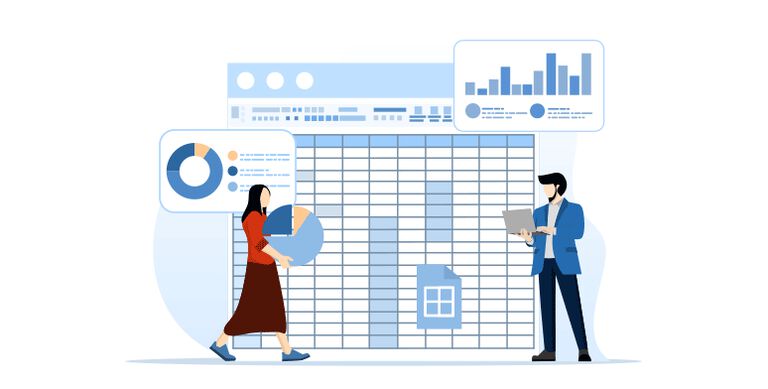Professionals who are used to organizing their lives in Excel at some point wish Excel could include a timer to help keep track of common tasks. Tasks like tracking time spent on specific projects or monitoring hourly rate. A quick look, however, reveals that – unless you are an accomplished VBA programmer – Excel does not offer an easy Start/Stop timer feature.
Excel does however offer features for storing and working with time data. If we put a few of these familiar tools together, we can create something very close to a Start/Stop timer without resorting to VBA.
This example will create a simple Time Log that:
- Inputs Start and Stop time with the press of a button, and then
- Calculates the elapsed time automatically.
To get started, create a Table with the three columns you'll need: Start Time, Stop Time, and Total Time. Format the cells in each column to the Time format.

To follow using our example, download Time Tracking Worksheet
Then, create a Macro that will enter the current time into a cell. The time used will be based on the clock time of the computer running Excel:
- Put your curser in the cell you want the time entered.
- Click Record Macro on the Developer tab.
- Enter a name for the macro and a description in the Record Macro dialog box, then click OK.
- Hit CTRL+Shift+; (semi colon)
This is the shortcut key for entering the time. You'll get something like this:

- Click Stop Recording.
This gives us a starting place, but we'll need to edit the macro a bit to get it to work the way we want. To edit the macro:
- Click Macros button on the Developer tab.
- Select the macro, then click Edit to open the VBA editor.

- This is the code the macro recorded:
- ActiveCell.FormulaR1C1 = "1:22 PM"
Range("A2").Select
If left, this would simply put the text "1:22 PM" into any cell the macro runs on. Instead, we need to replace "1:22 PM" with the NOW function that tells Excel to enter the current time. Replace the above with:
ActiveCell.Value = Now()

- Hit CTRL+S to save the macro changes and the sheet.
Now, when you run the macro, it will insert the current time into the active cell.
Next, let's assign the macro to a button so you can record your Start/Stop times with a simple click:
- On the Developer tab, click the Insert dropdown button.
- Choose the Button icon from the Form Controls list.

- Drag the cursor to outline the size and shape you'd like your button.
- Select the macro from the list in the Assign Macro dialog box. And click OK.

- Right-click on the new button and select Edit Text to change the button's label












